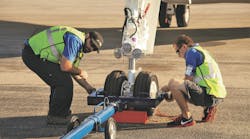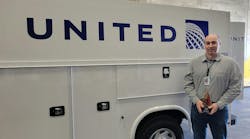The other day I read an article in the WSJ that took note of a certain CEO of a fairly large company for his refusal to use a business jet when traveling on company business. Rather, this CEO has chosen to travel commercial, enduring long delays, late arrivals and departures, and long hours on the road. The Journal noted that “tough times and public anger” might mean many CEOs will be joining this migration from the use of business aircraft. I have heard several times on business TV shows a new expression to denote the use of business aircraft — conspicuous consumption. All this unfavorable publicity threatens to harm a most important part of our business systems, the company aircraft.
I‘ve only flown on business aircraft enough times to count on my fingers, but I‘ve been working with technicians and pilots of corporate and Part 135 aircraft operations for more than 35 years. In the beginning there were reconfigured Lockheed Lodestars, Convair 440s, Beech 18s, etc. They were the forerunners for today’s company air transportation. Recognizing this special form of travel, Grumman (Gulfstream I), Pan Am Business Jets/Dassault (Falcon 20), Beech (King Air) and Bill Lear (Lear 23), Lockheed (JetStar), and others began offering aircraft especially designed for business use.
According to NBAA, there are approximately 15,000 business aircraft, most of which encompass a broad section of operations, including government, schools, churches, and others. Only 3 percent of business aircraft are flown by Fortune 500 companies. Business aviation has become an integral part of the U.S. economy, providing a considerable percentage to the yearly U.S. GDP.
Despite this, there is still the perception of conspicuous consumption. As result many operators are pulling back, selling their aircraft, and closing flight departments. Inventories will maximize and orders will slow. Jobs will be cut. Expansion will be put on hold. Marketing will see less dollars and advertising will be cut back drastically. Look at GM pulling their Super Bowl spots. None of this should be happening.
Business aviation enables companies to maximize the use of people and time resulting in higher productivity. There are some 5,300 public airports throughout the country and commercial airlines serve less than 11 percent of these. And this number continues to lessen daily as airlines consolidate and reduce capacity. Business aircraft allow companies to get personnel to these non-served, feeder airports to meet with clients in a cost-effective and efficient manner.
Those of you working in business aviation, be aware of the attacks on your livelihood. Be prepared to speak up and support the aviation industry. This is a great business we are in and we should not allow the misdeeds of a few to threaten its growth.




